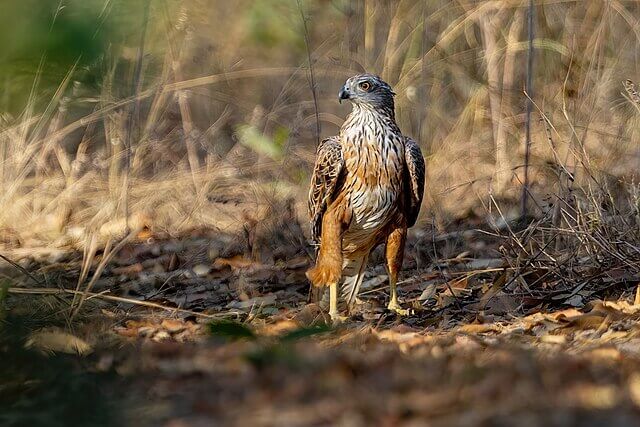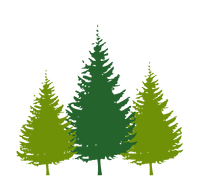
Establishing their nests high in the tallest trees, often near creeks, red goshawks hunt beneath the forest canopy, pursuing swift prey such as rainbow lorikeets and snatching them straight from the air.
From the ground, the low thrum of their powerful, metre-wide wings can be heard as they accelerate, before silently swooping and banking through the trees like feathered fighter jets.
Yet the sight of the red goshawk – found nowhere else on Earth – is vanishing from Australia’s landscapes.
“It’s gone extinct all across eastern Australia, right under our noses,” says Chris MacColl, a researcher at the University of Queensland and BirdLife Australia.
“It was still frequently seen in northern New South Wales and south-east Queensland up to the 2000s but after that, the records completely disappear. It has fallen off the map.”
Although first described in 1801, the species has never been common, and until recently, little was known about the habits of Australia’s rarest bird of prey. Even most birdwatchers have never encountered one.
Now scientists, including MacColl, are racing to determine how many red goshawks remain so they can refine conservation strategies to protect them.
Dr Richard Seaton, BirdLife Australia’s director of terrestrial birds, spent months searching for the species in south-east Queensland in 2013, revisiting sites where it had been recorded just 15 years earlier.
“I couldn’t find them anywhere. So we started a recovery team,” he says. “At the time, we didn’t know their home range or what habitats they needed or really what they were doing or where they were going.”
Historically, the red goshawk’s range extended as far south as Sydney. In the late 18th century, convict artist Thomas Watling depicted one from a specimen nailed to a settler’s hut in Botany Bay. That drawing – now held in the Natural History Museum in London – was later used by British ornithologist John Latham to formally describe the species in 1801.
In 2023, the federal government reclassified the red goshawk from vulnerable to endangered, judging it to be at greater risk of extinction. It is estimated that only around 1,300 mature birds remain in the wild, though MacColl believes the true number could be fewer than 1,000.
Today, their breeding grounds are limited to the tropical savannas of northern Australia, stretching from the Kimberley across to Cape York.
“While that area is mostly intact, it has its own issues,” says MacColl, who has been studying the bird for seven years.
“I worry about climate change and particularly the immense heat and thermal threat risk for the young birds. Then there’s the ongoing threat of habitat loss from agriculture, logging and mining.”
Satellite tracking has shown that some juveniles undertake perilous journeys of up to 1,500 kilometres south into central Australia, remaining there for around eight months – perhaps honing their hunting skills – before returning to their coastal territories.
The reasons behind the species’ rapid decline remain uncertain, though Seaton suspects habitat fragmentation is the main culprit.
“They look for the tallest tree in the tallest stand, and those stands of trees aren’t that common any more,” he says.
Red goshawks are elusive and occupy vast territories – up to 600 square kilometres – meaning they have always been thinly scattered across the landscape, favouring coastal regions and waterways.
They are quiet birds; unlike most large species that take flight when approached, giving away their presence, a red goshawk, Seaton notes, “will just glare at you.”
This year, only ten breeding pairs have been recorded on the Australian mainland, with a further ten on the Tiwi Islands – where Melville Island, the largest in the group, is now considered the species’ last stronghold.
BirdLife Australia is training Indigenous rangers and Traditional Owners in the north to identify the birds and monitor their metre-wide stick nests, built on horizontal branches, to better understand breeding success and population numbers.
Tiwi Islander Chris Brogan, a firefighter with Plantation Management Partners on Melville Island, is part of a team that monitors the nests, observing them for 30-minute intervals to record activity.
“They’re beautiful, but they can be hard to spot because their colours blend in with the trunks of the trees,” he says.
“When I started, I thought they were just another bird. I thought they were everywhere. But it’s a bird that’s disappearing.”
MacColl first saw a red goshawk nest about a decade ago while working as an environmental scientist for Rio Tinto in western Cape York.
“I have been totally obsessed ever since,” he says.
The red goshawk belongs to a genus with only one other known member – Papua New Guinea’s chestnut-shouldered goshawk.
Their strength continues to impress him. When collecting sticks from the forest floor, a red goshawk can shoot straight up to its perch 30 metres above. “They go straight up,” he says, still in awe.
“There really is nothing like them,” says MacColl. “They’re not closely related to any other bird of prey in Australia – they’re on their own branch of the evolutionary tree.
“We are going to need a network of people together – and the best information possible to know what they need. That’s how we avert extinction.”
——————————————————————————
At Natural World Fund, we are passionate about restoring habitats in the UK to halt the decline in our wildlife.

